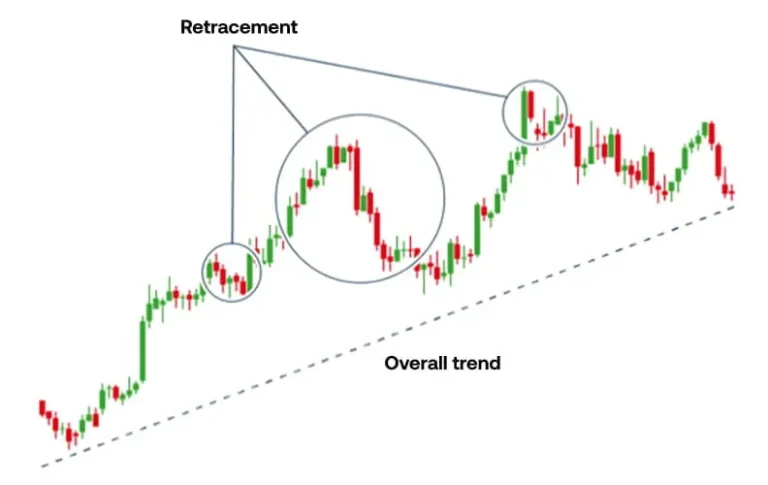Trend trading is a strategy that aims to capture gains by analyzing an asset's momentum in a particular direction. It's used by traders to capitalize on sustained price movements in financial markets, typically employed by both short-term and long-term investors.
- Main Benefit: Potential for substantial profits by riding strong market trends
- Primary Concern: Vulnerability to sudden trend reversals and false signals
- Best For: Traders comfortable with technical analysis and longer holding periods
- Important Note: Requires disciplined risk management and the ability to identify genuine trends
Trend Trading: Advantages and Disadvantages
This table outlines the key pros and cons of trend trading, helping traders understand the potential benefits and risks associated with this popular trading strategy.
| Pros | Cons |
|---|---|
| Potential for high returns on long-term trends | Vulnerability to sudden trend reversals |
| Simplifies decision-making process | Risk of late entry and early exit |
| Can be applied across various markets and timeframes | Potential for significant losses if trend changes unexpectedly |
| Reduces impact of short-term market noise | Requires patience and discipline to follow trends |
| Allows traders to capitalize on market momentum | Can lead to missed opportunities in range-bound markets |
| Provides clear entry and exit points | Difficulty in accurately timing trend reversals |
| Can be automated using technical indicators | Susceptibility to false breakouts and fakeouts |
| Encourages disciplined trading approach | Potential for overtrading during choppy market conditions |
| Helps traders avoid emotional decision-making | May require longer holding periods, tying up capital |
| Allows for effective use of stop-loss orders | Can be challenging in highly volatile markets |
| Can generate substantial profits in strong trends | Reliance on lagging indicators for trend confirmation |
| Suitable for both short-term and long-term trading | Risk of whipsaw losses in choppy markets |
| Enables traders to ride strong market movements | Requires continuous monitoring of trend strength |
| Can be combined with other trading strategies | Potential for missed profits during trend reversals |
| Allows for scaling in and out of positions | Can be psychologically challenging to hold through pullbacks |
| Provides opportunities in both bullish and bearish markets | May lead to overconfidence in strong trending markets |
| Helps in identifying overall market direction | Difficulty in distinguishing between trends and random movements |
| Can be backtested for strategy refinement | Requires adaptation to changing market conditions |
| Encourages the use of technical analysis tools | Can be less effective in low-liquidity markets |
| Allows for position sizing based on trend strength | Risk of overexposure to a single market direction |
| Can benefit from the power of compound returns | Potential for increased transaction costs due to longer holding periods |
| Provides a systematic approach to trading | May require significant time for trend development |
| Allows for clear risk management strategies | Can be affected by sudden market gaps or limit moves |
| Can capitalize on market inefficiencies | Difficulty in identifying trend exhaustion points |
| Enables traders to focus on strongest market sectors | Risk of holding losing positions too long, hoping for trend resumption |
| Can be applied to multiple timeframes for confirmation | Potential for missing out on counter-trend opportunities |
| Allows for the use of trailing stop-losses | Can be less effective in markets with frequent economic releases |
| Provides a framework for consistent trading decisions | May require larger account sizes for proper position sizing |
| Can benefit from the momentum effect in markets | Risk of overreliance on historical trend patterns |
| Allows for adaptation to individual risk tolerance | Can be challenging to implement in all market conditions |
Trend Trading Market Statistics
This table provides key statistics and market data related to trend trading, including its prevalence, performance metrics, and adoption rates among different types of traders.
| Statistical Analysis & Market Data | |
|---|---|
| Global algorithmic trading market size (2023) | $2.19 billion |
| Projected market size by 2032 | $4.06 billion |
| Compound Annual Growth Rate (CAGR) 2024-2032 | 7% |
| Percentage of U.S. equity trades using automated methods | 60-73% |
| Typical win rate for trend-following strategies | 20-40% |
| Average payoff ratio for trend-following strategies | 2 to 10 (or higher) |
| Percentage of time markets spend trending | Approximately 20% |
| Percentage of time markets spend in trading ranges | Approximately 80% |
| U.S. algorithmic trading market projected value by 2032 | $1,042.8 million |
| Percentage of institutional investors using trend-following strategies | Approximately 35% |
Technical Aspects of Trend Trading
This table outlines the key technical specifications and requirements for implementing effective trend trading strategies, including tools, indicators, and methodologies used by traders.
| Technical Specifications & Requirements | |
|---|---|
| Primary technical indicators | Moving averages, trend lines, momentum indicators |
| Common trend identification tools | Price action analysis, chart patterns, technical indicators |
| Minimum data requirements | Historical price data, volume data, market sentiment indicators |
| Recommended trading platforms | MetaTrader, TradingView, NinjaTrader |
| Optimal timeframes for trend trading | Daily, weekly, and monthly charts for long-term trends |
| Risk management tools | Stop-loss orders, position sizing calculators |
| Backtesting requirements | Historical data, backtesting software, performance metrics |
| Algorithmic trading components | Programming skills (Python, R), API access, data feeds |
| Market analysis tools | Fundamental analysis software, economic calendars |
| Regulatory compliance | Knowledge of financial regulations, reporting requirements |
Cost and Value Analysis of Trend Trading
This table presents a comprehensive analysis of the costs associated with trend trading and the potential value it can generate, including both financial and non-financial aspects.
| Cost & Value Analysis | |
|---|---|
| Initial capital requirement | $5,000 - $50,000 (varies by market and strategy) |
| Trading platform costs | $0 - $200 per month |
| Data feed expenses | $20 - $300 per month |
| Brokerage fees | 0.1% - 1% per trade (varies by broker and volume) |
| Potential annual returns | 10% - 50% (highly variable based on skill and market conditions) |
| Education and training costs | $500 - $5,000 (courses, books, mentoring) |
| Time investment | 20 - 60 hours per week for active traders |
| Technology infrastructure costs | $1,000 - $10,000 (computer, software, internet) |
| Potential drawdown periods | 10% - 30% of account value during unfavorable market conditions |
| Tax implications | Short-term capital gains tax on profits (varies by country) |
Trend Trading vs. Other Trading Strategies
This table compares trend trading with other popular trading strategies, highlighting the key differences, advantages, and disadvantages of each approach.
| Comparative Analysis & Alternatives | |
|---|---|
| Trend Trading vs. Swing Trading | Longer holding periods, lower trade frequency for trend trading |
| Trend Trading vs. Day Trading | Less stress, lower time commitment for trend trading |
| Trend Trading vs. Value Investing | More active management, shorter time horizons for trend trading |
| Trend Trading vs. Scalping | Higher profit potential per trade, lower transaction costs for trend trading |
| Trend Trading vs. Mean Reversion | Opposite approaches; trend trading follows momentum, mean reversion bets against it |
| Trend Trading vs. Options Trading | Lower leverage, simpler execution for trend trading |
| Trend Trading vs. Arbitrage | Higher risk, potentially higher returns for trend trading |
| Trend Trading vs. Fundamental Analysis | Focus on price action rather than company financials for trend trading |
| Trend Trading vs. Algorithmic Trading | Can be manual or automated; algorithmic trading is always automated |
| Trend Trading vs. Position Trading | Shorter holding periods, more frequent trades for trend trading |
Future Outlook for Trend Trading
This table explores the future trends and industry outlook for trend trading, including technological advancements, market dynamics, and potential challenges and opportunities in the coming years.
| Future Outlook & Industry Trends | |
|---|---|
| Integration of AI and Machine Learning | Enhanced trend identification and prediction capabilities |
| Quantum Computing in Trading | Potential for faster and more complex trend analysis |
| Increased Regulation | Stricter oversight of algorithmic and high-frequency trading |
| Democratization of Trading Tools | More accessible advanced trading platforms for retail investors |
| Big Data Analytics | Improved trend forecasting through analysis of vast datasets |
| Blockchain and Cryptocurrency Impact | New trend trading opportunities in digital asset markets |
| Environmental, Social, and Governance (ESG) Trends | Incorporation of ESG factors in trend analysis and trading decisions |
| Cloud-Based Trading Solutions | Increased adoption of scalable and flexible trading infrastructure |
| Social Media and Sentiment Analysis | Greater influence of social sentiment on trend identification |
| Global Market Integration | Enhanced opportunities for cross-market trend trading strategies |







